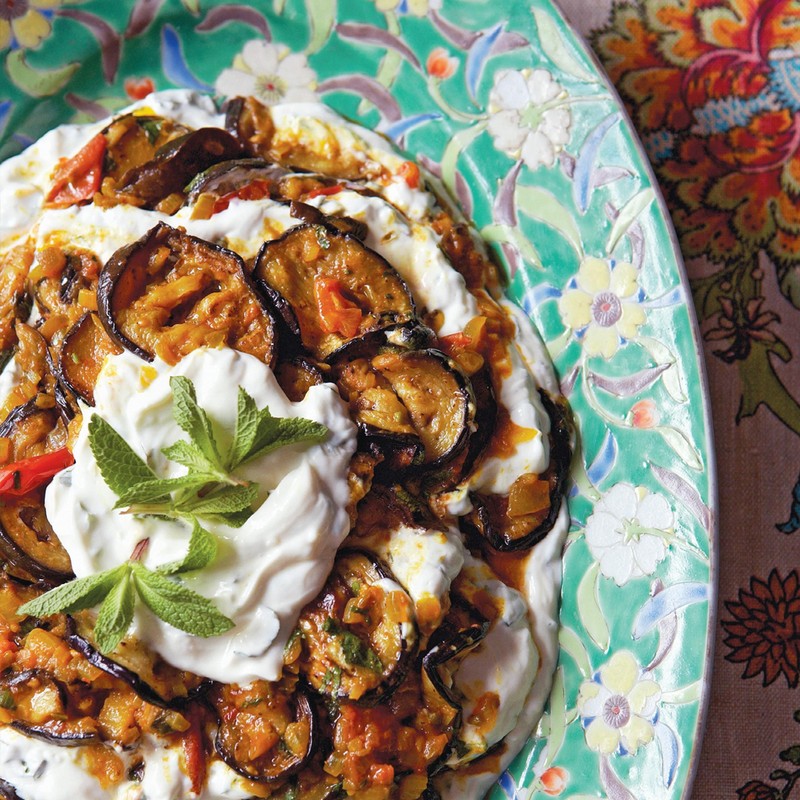Afghan Yoghurt With Aubergines
Simply remove the calyx and slice the aubergines into slices 6-7mm (about ¼ inch) thick. Sprinkle salt over them, and leave it to draw out the water for at least 30 minutes, then rinse and wipe dry. Heat a slosh of oil in a deep frying pan (one with a lid is good) and sizzle the onion and chillies until the former is soft. Remove with a slotted spoon and set to one side. Now add a bit more oil to the pan, and fry the aubergine slices so that they are gently browned on both sides. Sprinkle them with the turmeric, and add the tomatoes and coriander (retaining about a quarter of it for garnish) together with the cooked onion/chilli. Add a little water to the pan (so that the ingredients are more or less covered), place the lid on it (or improvise one), turn the heat right down and leave to simmer for around 30 minutes (but keep an eye on the liquid level).
In the meantime, make the ‘sauce’. Blend the yoghurt and the lemon juice in a bowl, stir in the garlic and the mint, and season to taste. Chill well.
Time to assemble the dish. Check the seasoning of the aubergine – you
may need to add salt. Spoon half of the yoghurt across a decent sized platter, spreading it to get good coverage. Then layer the aubergines on top, and follow that with the rest of the yoghurt. Scatter the remaining coriander over the top and serve immediately – even as you are arranging the hot and the cold elements, they will start to leach into each other. This is a treat best mopped up with warm naan, although you could eat it with rice.
Alternatively, substitute the aubergine with courgette or marrow – there's no need to salt the vegetables in advance.
*Though sunflower oil is more authentic, rapeseed (or canola) oil is one of the good guys in a world of general oleaginous badness: it’s got omega 3 and 6, and the right proportion of saturated and unsaturated bits. As aubergines gobble up so much oil, it makes sense to use a good one.
Extract credit to Veggiestan: A vegetable lover’s tour of the middle east by Sally Butcher (Pavilion Books).
Image credit to Yuki Sugiura
DISCLAIMER: We endeavour to always credit the correct original source of every image we use. If you think a credit may be incorrect, please contact us at info@sheerluxe.com.



